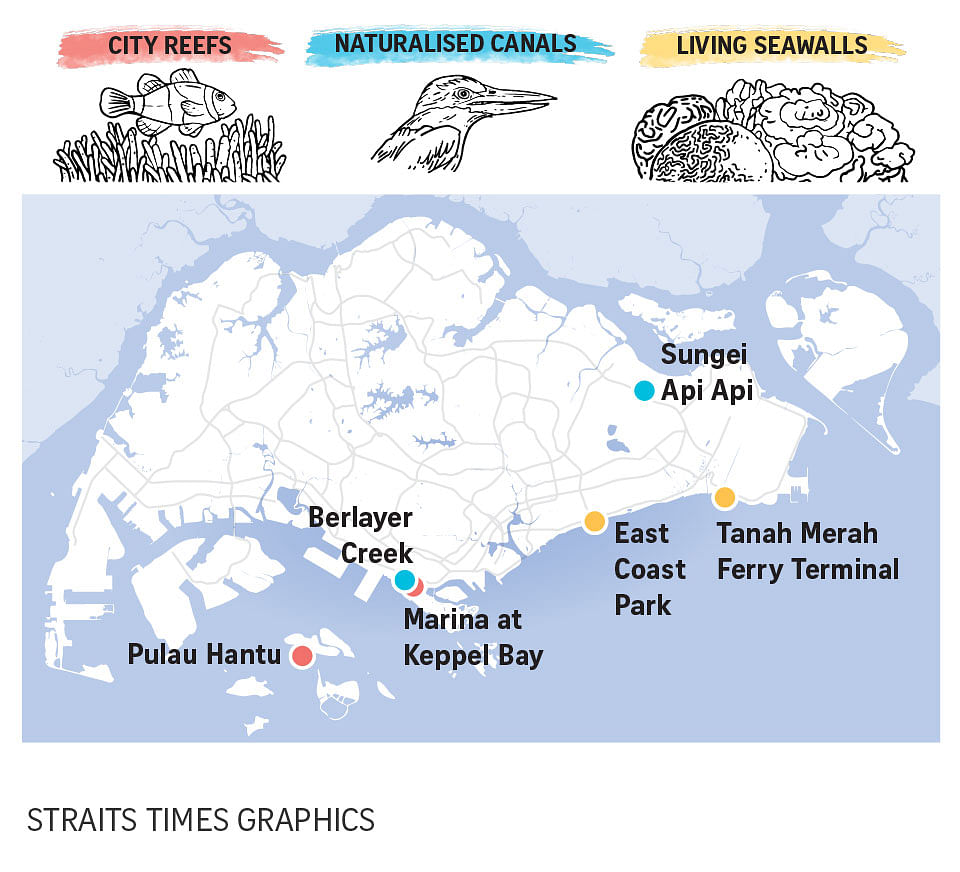6 spots in Singapore where marine life has thrived amid coastal development
Sign up now: Get ST's newsletters delivered to your inbox
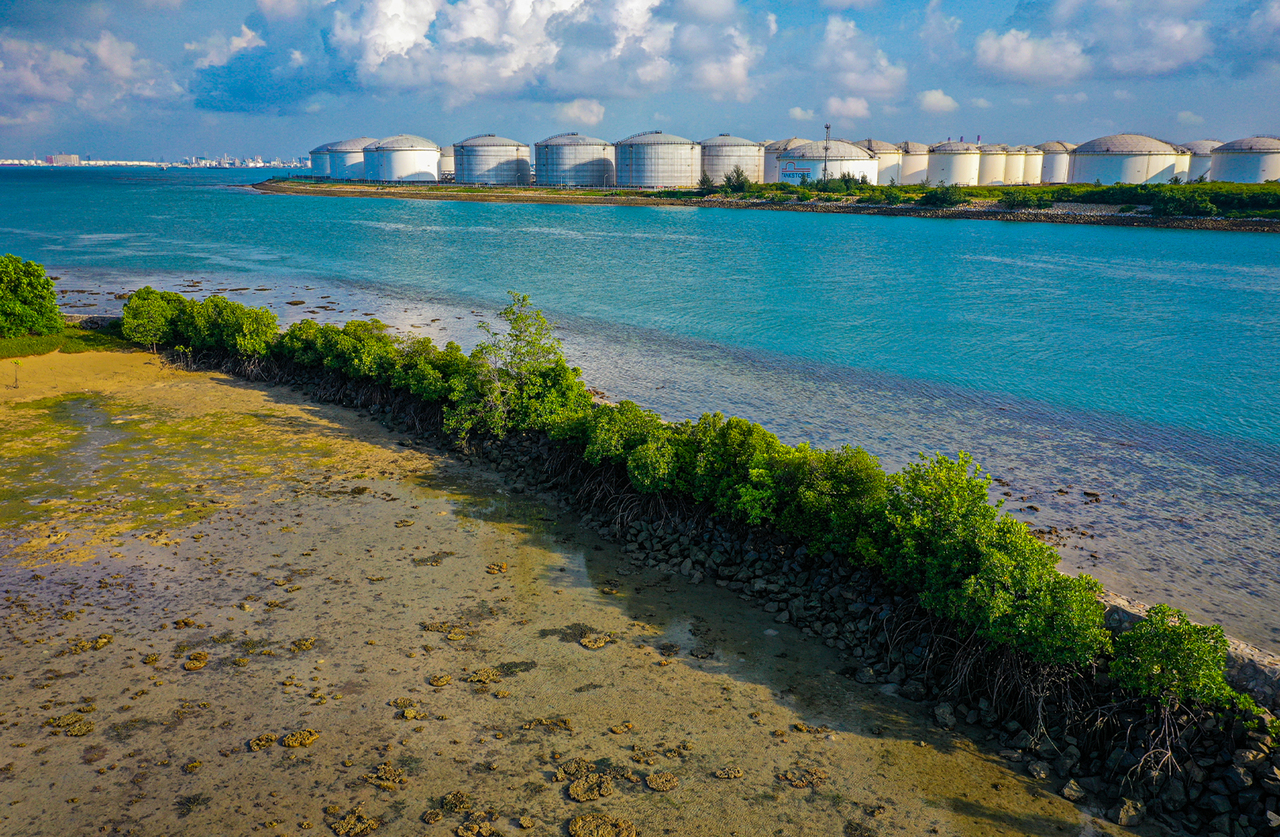
Diverse mangrove species have settled naturally along the seawalls at Pulau Hantu.
PHOTO: NATHANIEL SOON
Follow topic:
SINGAPORE - In a short documentary series launched in March, final-year Yale-NUS student Nathaniel Soon explores how nature has thrived on the Republic's seawalls, reefs and canals, even amid coastal development.
He hopes that planners will protect the island's rich coastal ecosystems as Singapore reclaims more land in the coming decades and engages Singaporeans in the review of its long-term land-use plans.
The Straits Times highlights six sites, some hidden in plain sight, featured in the series.
City Reefs
Marina at Keppel Bay
Marina at Keppel Bay, where a shipyard used to be, has since evolved into a city reef teeming with more than 150 kinds of marine life, including seahorses, critically endangered hawksbill turtles and clownfish.

Corals at Marina at Keppel Bay.
PHOTO: Nathaniel Soon
In taking over the area in 1992, Keppel Land, a subsidiary of Keppel Corporation, redeveloped the marina to allow currents to freely flow through, bringing in nutrients and coral larvae.
Such design choices and strict controls on boat use provide fertile conditions for a rich variety of corals to grow beneath the floating pontoons.
Pulau Hantu
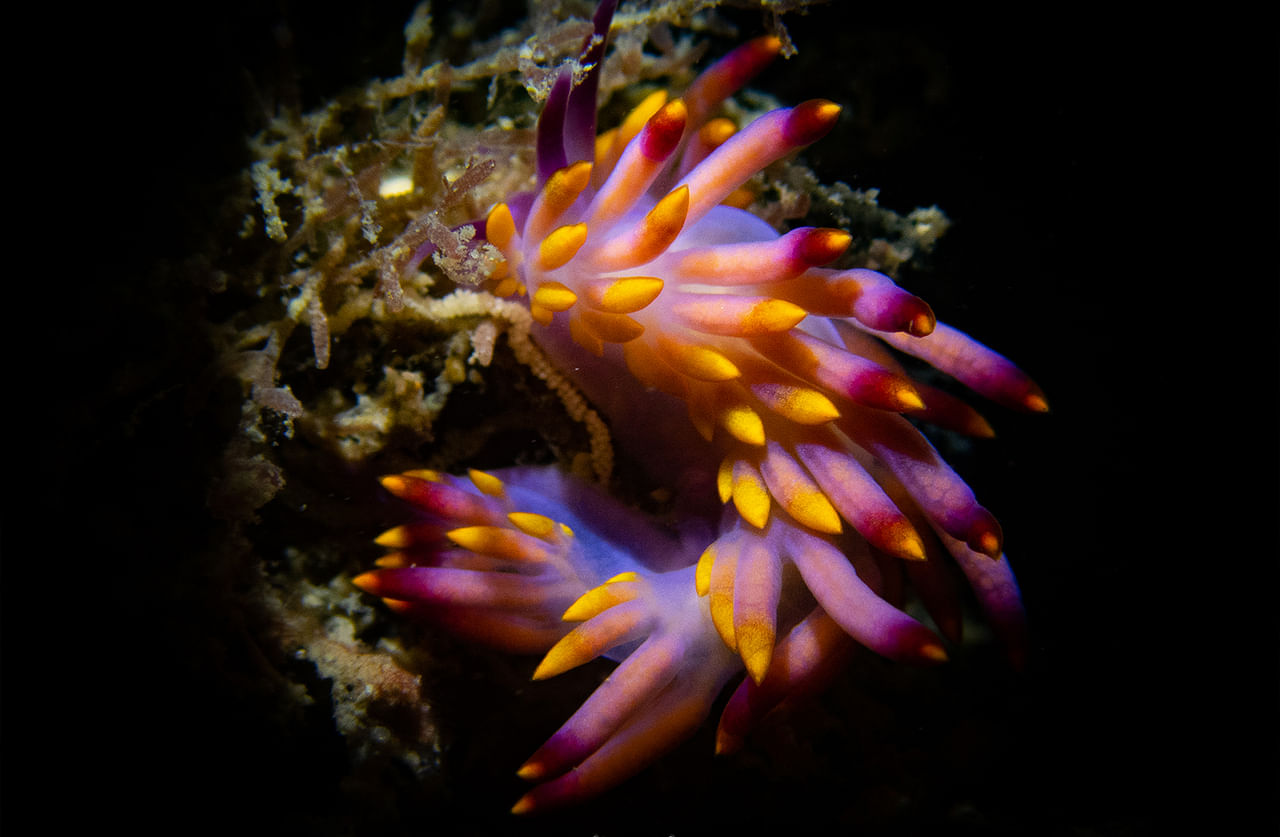
Trinchesia sibogae nudibranch in the waters near Pulau Hantu.
PHOTO: Nathaniel Soon
Beneath Pulau Hantu's unassuming jetty lies an underwater metropolis replete with a kaleidoscope of aquatic organisms, including vibrant sea slugs called nudibranchs.
The popular diving spot, made up of a pair of islets, is located near the Southern Islands.
Living seawalls
Tanah Merah Ferry Terminal
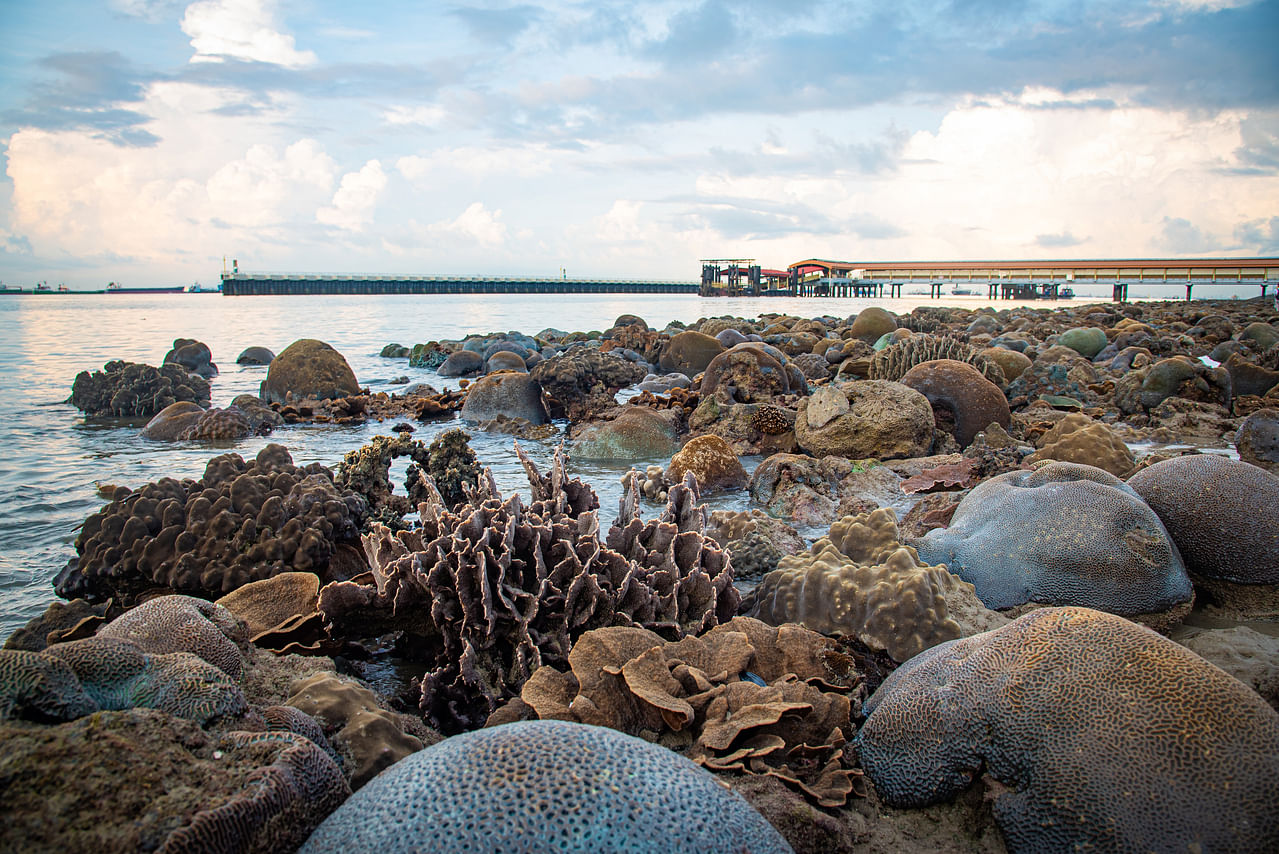
Corals at Tanah Merah Ferry Terminal.
PHOTO: Nathaniel Soon
A seawall at Tanah Merah Ferry Terminal is among seawalls and revetments - sloping structures to absorb the energy of incoming water - that have been naturally settled by hard corals.
Coral density and diversity have been known to exceed some natural reefs due to the presence of stable granite boulders.
National Parks Board (NParks) group director of the National Biodiversity Centre Ryan Lee told The Straits Times that NParks pays attention to coral communities that have naturally regenerated themselves on seawalls and will advise developers to take precautions to minimise damage to the corals in the event of coastal development.
He said: "Where coral communities are large and established, NParks may require the corals to be transplanted to other sites to prevent destruction.
"All hard corals in Singapore are also protected from being destroyed or removed under the Wildlife Act."
East Coast Park
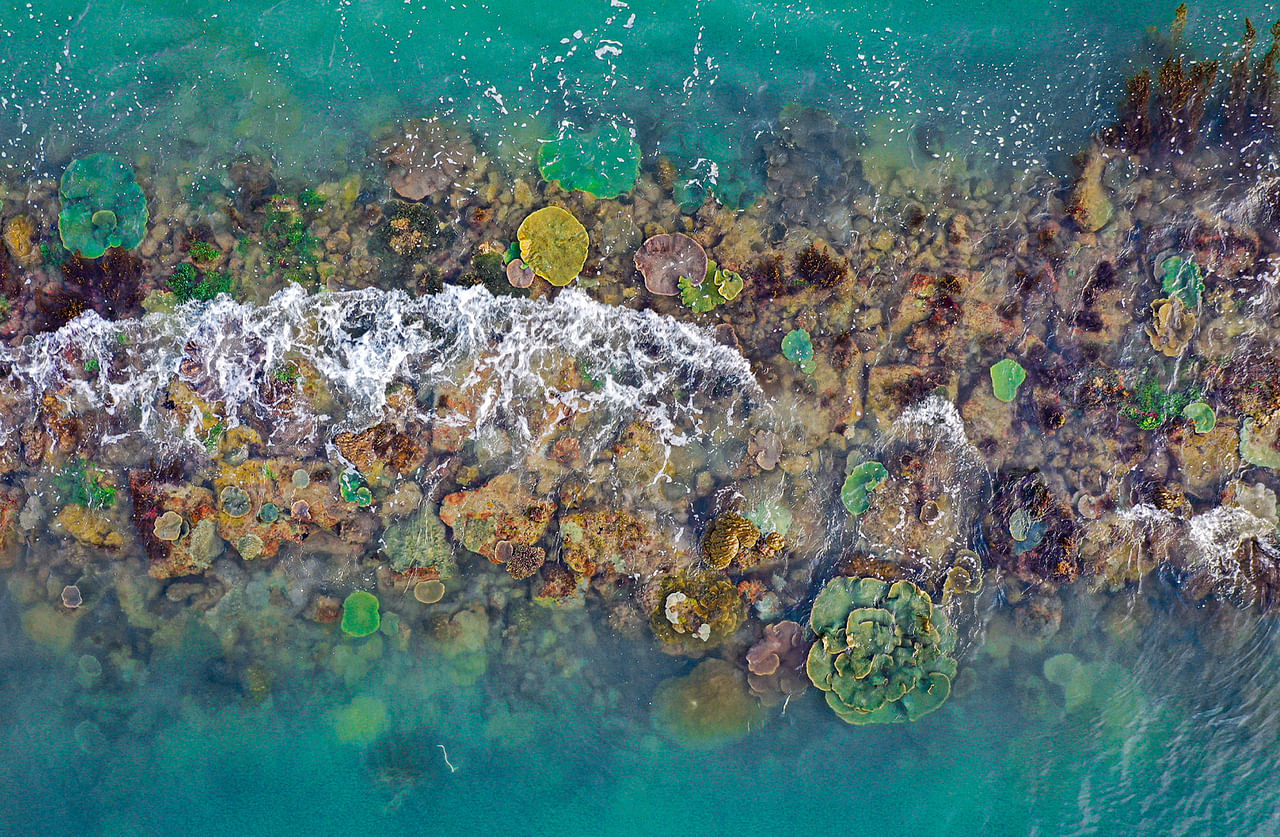
Corals growing on an artificial embayment along East Coast Park.
PHOTO: Nathaniel Soon
Encrusted on an artificial embayment along East Coast Park is a colourful coral garden visible only during low tide.
There is a greater sense of urgency to ensure development will not be detrimental to marine life, with possible future reclamation of coastal areas spanning Marina East, East Coast and Changi, Mr Soon said.
An Urban Redevelopment Authority plan in 1991 envisions that these areas will form a reclaimed island called "Long Island" designated for leisure and housing development.
In February, The Straits Times reported that this plan could be updated to also tackle rising sea levels, with the possibility of reclaiming a series of offshore islands there.
Naturalised canals
Berlayer Creek

Berlayer Creek is made up of three types of habitats, including mangroves, rocky shore and mudflats.
PHOTO: Nathaniel Soon
One of two remaining mangroves in the south of mainland Singapore, Berlayer Creek is made up of three types of habitats, including mangroves, rocky shore and mudflats.
Scientists have documented that healthy coastal ecosystems, particularly mangroves, are highly effective in carbon storage and sequestration, with the ability to capture more than three times the carbon in dryland tropical rainforests, said Mr Lee.
Mangroves can also help prevent coastal erosion, protecting coastlines during storm surges and shielding seagrass beds and coral reefs from siltation, making them natural assets that can be used as a nature-based solution to buffer against climate change, he added.
Sungei Api Api
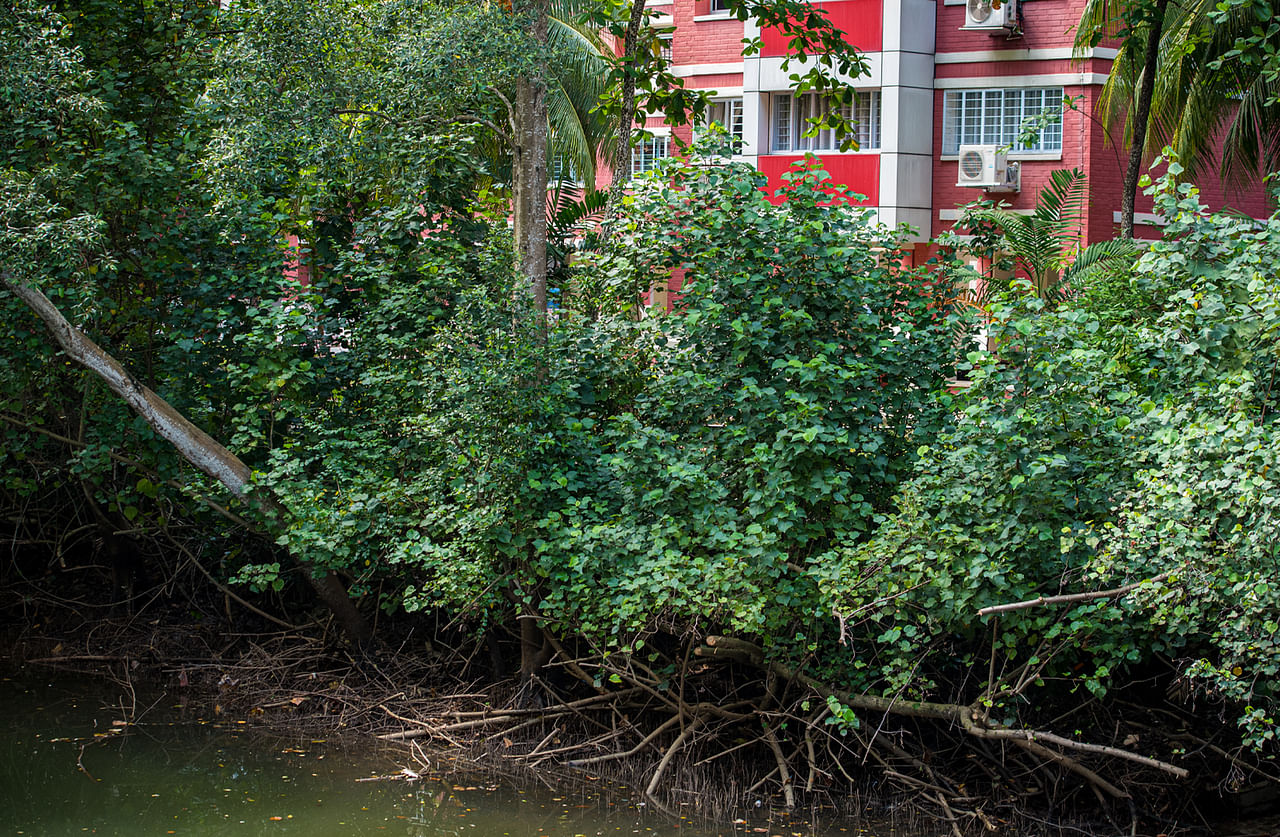
Mangroves along Sungei Api Api.
PHOTO: Nathaniel Soon
Located in the north-east of Singapore, Sungei Api Api supports a mangrove ecosystem in Pasir Ris.
In the 1990s, the river was deepened to 2m below the low-tide level to create a permanent channel of water, with more land allocated to it such that it could accommodate mangroves while meeting drainage needs.
This was a change from the conventional method of concretising a river to make a canal.
So far, NParks has engaged in mangrove restoration aimed at coastal protection in Pulau Tekong, the recently completed Kranji Coastal Nature Park and the upcoming project involving the restoration of about 2.2km of Pulau Ubin's northern coastline slated for completion in 2024, said Mr Lee.
NParks is studying the application of different nature-based solutions in other coastal areas with mangroves in Singapore, tailoring it to different site conditions and climate challenges, he added.
